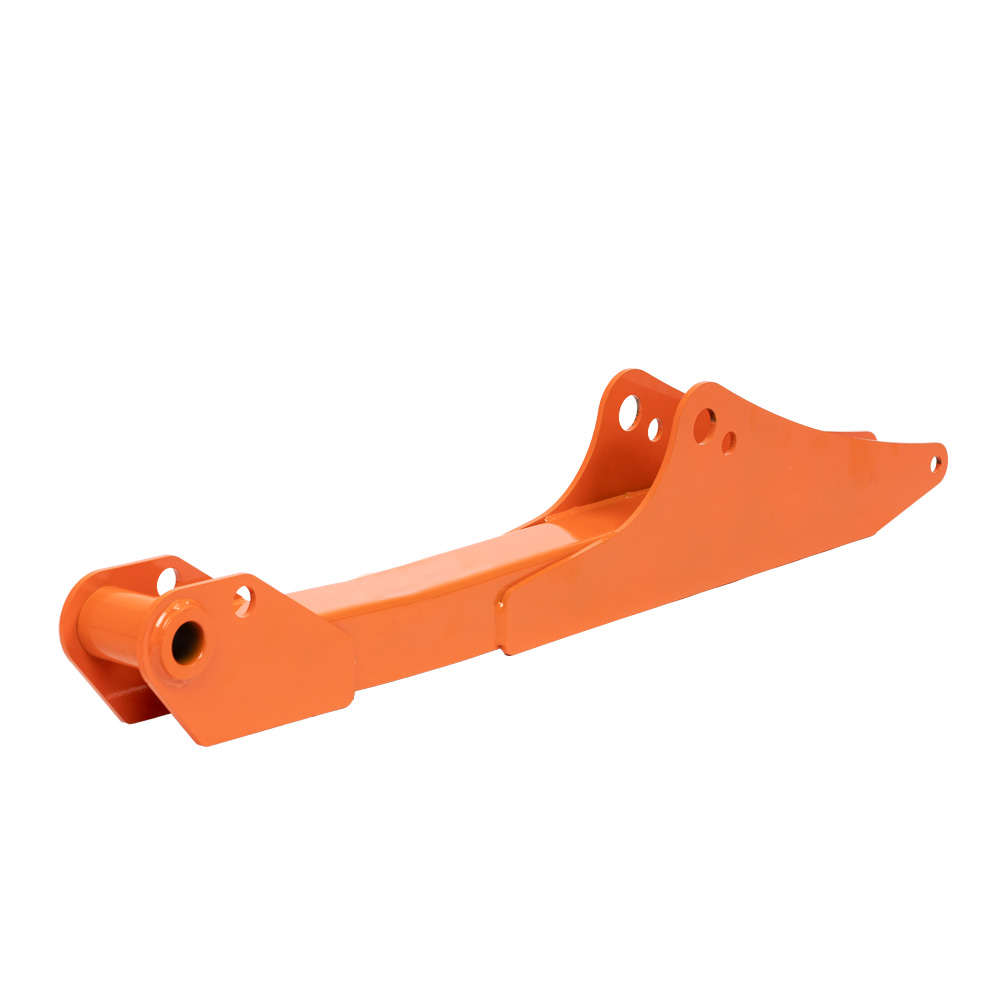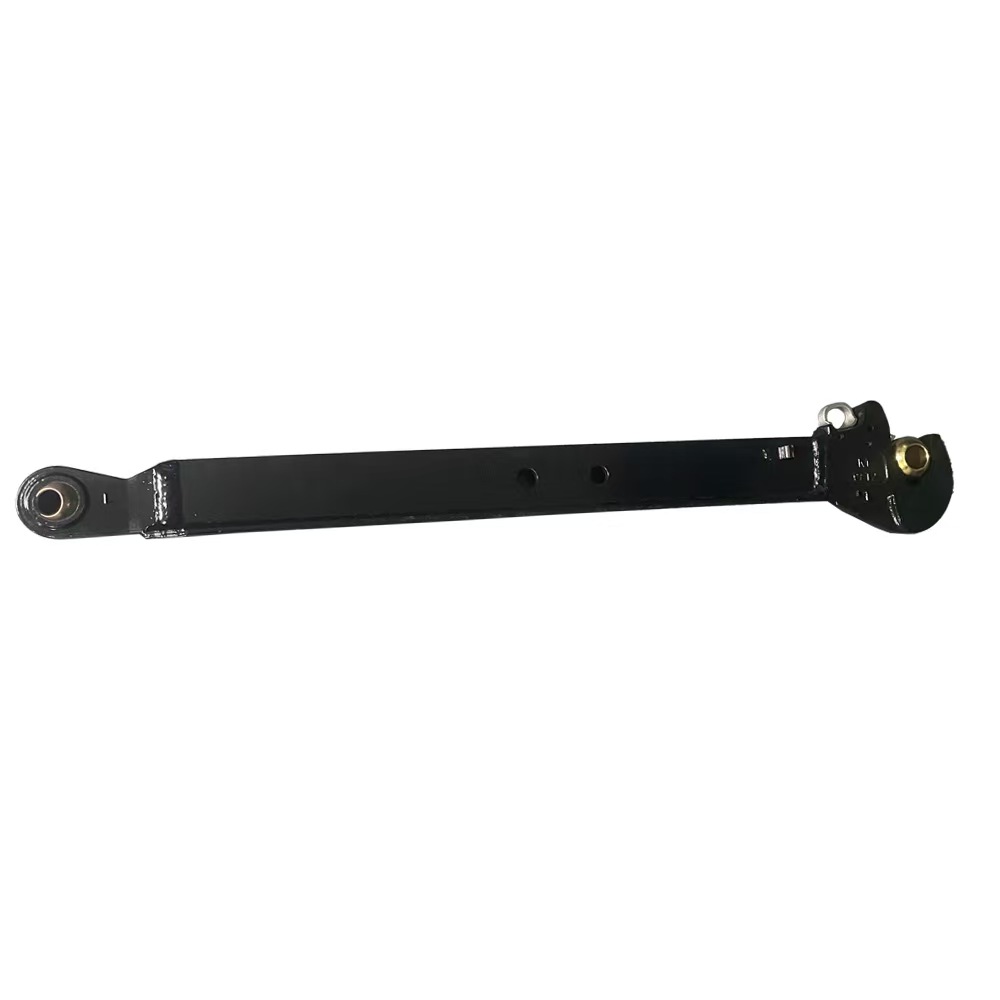Stabilizer Arm Weldment an important type of construction machinery accessory, which mainly plays a supporting and protective role, ensuring stable operation of the machinery and preventing component damage.

This welding bracket integrates processes such as SHEET METAL CUTTING robot welding, and CNC precision machining. Specific welding fixtures and inspection gauges ensure product dimensions. After welding is completed, CNC machining of threaded holes ensures a uniform center distance of the holes. We choose the appropriate processing process for different product requirements.
Before designing welding brackets, it is necessary to conduct a detailed analysis of the structure and usage requirements of construction machinery. Understand the components to be supported and their parameters such as weight, size, and material, as well as the loads and impacts to be borne, providing a basis for design. Based on these parameters, the design scheme of the welding bracket can be determined, including shape, size, thickness, and connection method.

When selecting materials, it is necessary to consider the usage environment and requirements of the welding bracket. Commonly used materials include carbon steel, stainless steel, aluminum alloy, etc. For some supports that need to withstand large loads, high-strength steel or other alloy materials can be chosen.
In the process of manufacturing welding brackets, high-strength plates are laser cut and welded together with other accessories, requiring the use of various tools and equipment, including cutting machines, pipe bending machines, drilling machines, milling machines, etc. According to the design scheme, these equipment can be used to perform machining operations such as cutting, bending, drilling, and milling on the material to obtain the required support shape and size. During the machining process, attention should be paid to ensuring the accuracy and surface quality of each part to avoid problems such as burrs and deformation.
Stabilizer Arm Weldment have broad application prospects in the field of engineering machinery parts manufacturing. Welding brackets play an important role in construction machinery such as excavators, loaders, and cranes. With the development of construction machinery and the improvement of technical level, the requirements for the manufacturing quality and accuracy of welding brackets are also increasing. Therefore, Yogo Machine Parts Factory needs to continuously introduce advanced manufacturing technology and equipment to improve the manufacturing level of welding brackets to meet market demand.
Definition and Characteristics
Definition: Stabilizer Arm Weldment is a stable arm structure formed by welding two or more pieces of metal materials (such as steel plates, profiles, etc.) together to form a whole with specific shapes and functions.
Features: Welded parts have the advantages of high connection strength, compact structure, and low manufacturing cost. On this basis, the stable arm welding parts also need to meet specific mechanical properties and stability requirements.
Application area
Stabilizer Arm Weldment are applied in multiple industries, including but not limited to the following aspects:
Construction machinery: In construction machinery such as excavators and loaders, the Stabilizer Arm Weldment are important components for supporting and stabilizing the entire machine.
Construction machinery: Stabilizer Arm Weldment in construction machinery such as tower cranes and construction elevators, used to provide stable support and work platforms.
Automobile manufacturing: In the chassis, suspension system and other parts of the car, the Stabilizer Arm Weldment play a role in supporting and stabilizing the body of the car.
Welding Technology and Requirements
Stabilizer Arm Weldment requires advanced welding techniques and strict process requirements to ensure welding quality and stable arm performance. Common welding techniques include electrode arc welding, gas shielded welding, submerged arc welding, and argon arc welding. During the welding process, it is necessary to control parameters such as welding current, voltage, and welding speed to ensure the continuity and uniformity of the weld seam. At the same time, strict inspection and testing of welded components are also required to ensure that they meet design requirements and usage standards.
You can also click to view more Construction Machine Parts content:SHEET METAL WELDING BRACKET ,Square Tube Bracket,weldment bracket,axle pin,Pin connections.








